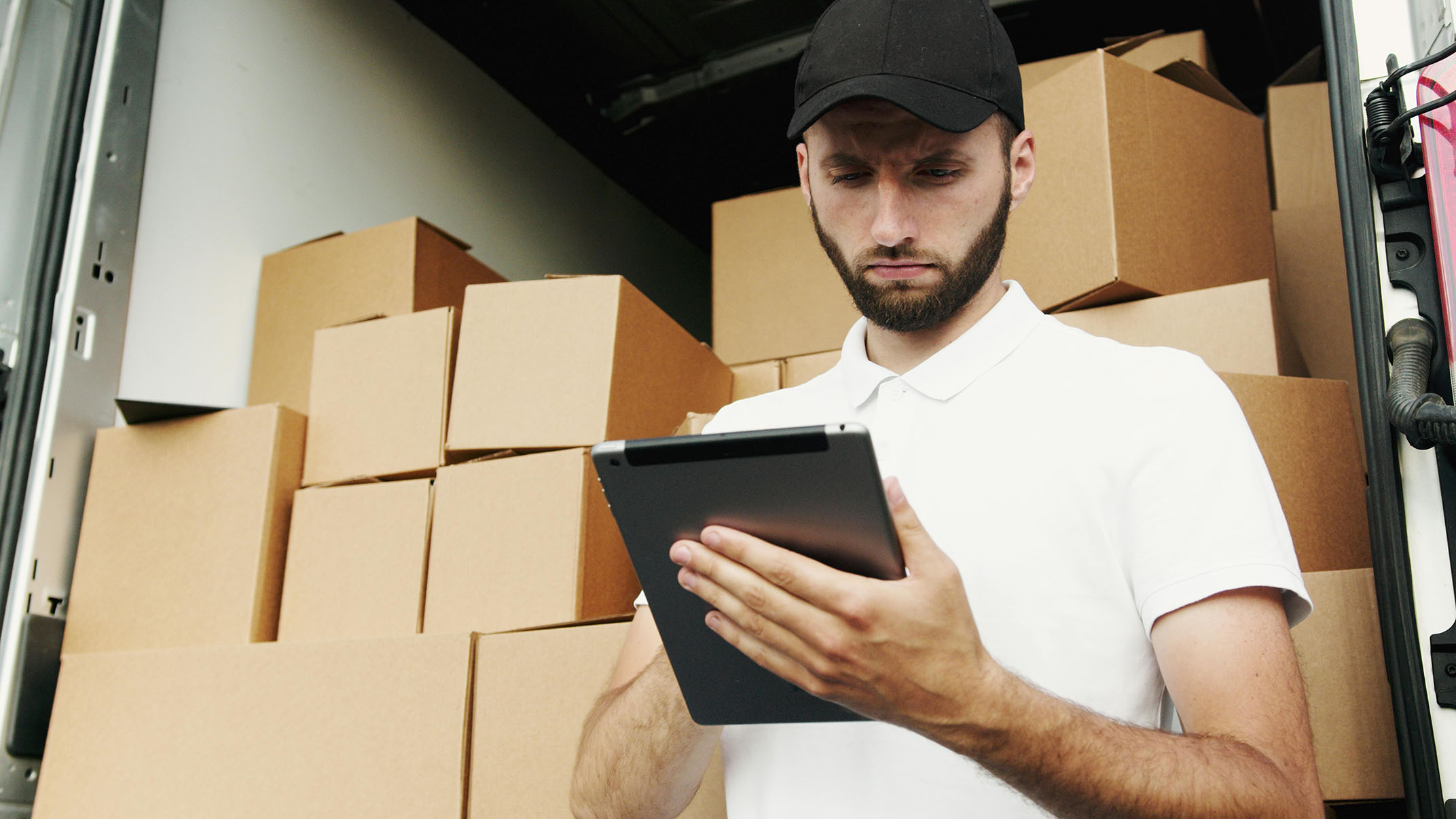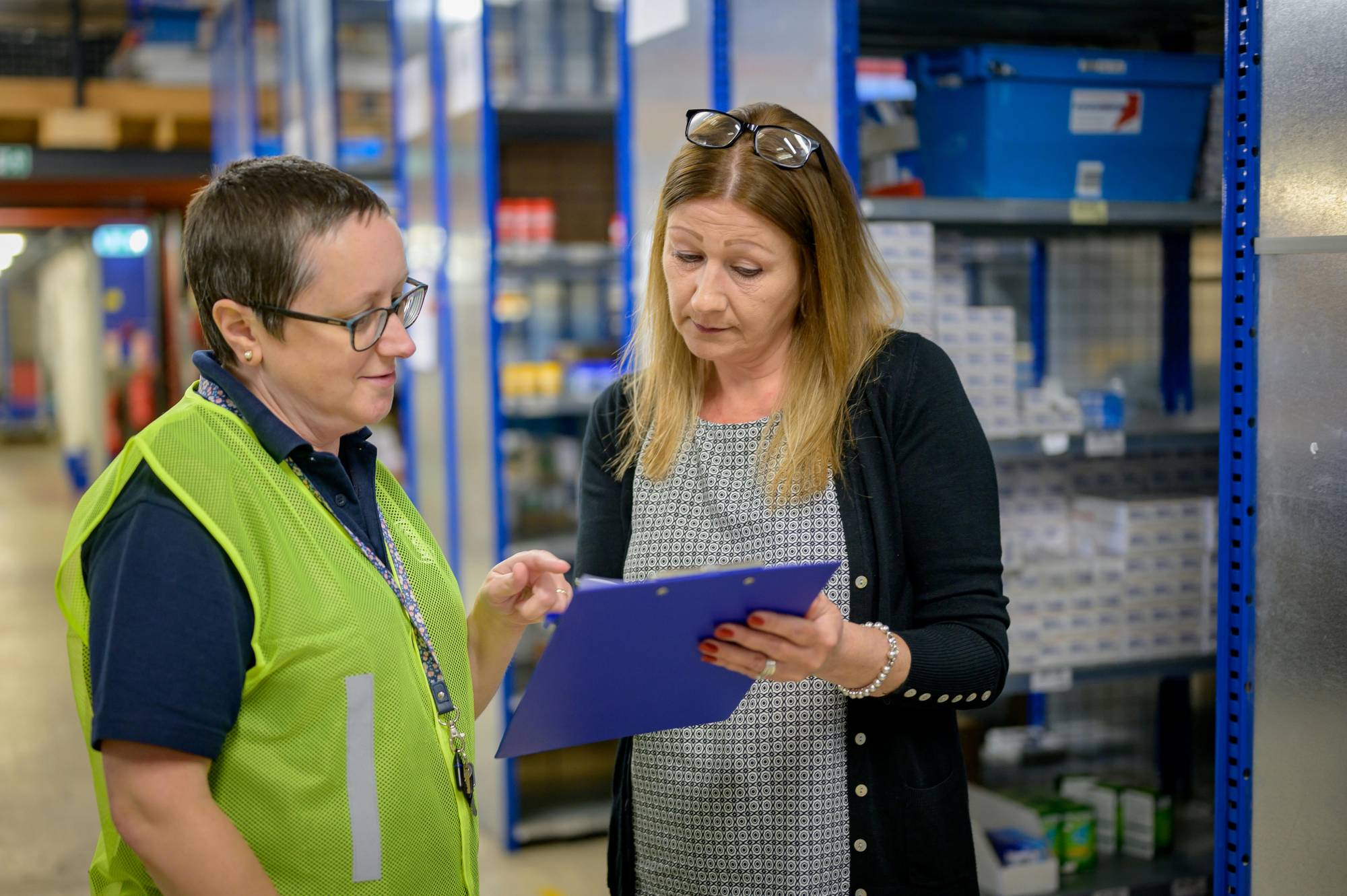The subscription box model has exploded in popularity, offering small businesses a way to build loyal customer bases through curated, recurring shipments. But behind the appealing unboxing experience lies a complex operation that demands precision, consistency, and scalability. Many growing businesses struggle to manage the logistics in-house, especially as order volume increases and customer expectations rise.
Here are seven essential things every small business needs to know about subscription box fulfillment.
Table of Contents
Key Takeaways✔ Choosing the right subscription box 3PL partner directly impacts delivery speed and customer satisfaction. ✔ Reliable pick and pack fulfillment ensures accuracy and protects your brand’s reputation. ✔ Strong inventory management prevents delays, backorders, and excess storage costs. ✔ Branded packaging enhances the unboxing experience and increases retention. ✔ Automation streamlines recurring shipment logistics and reduces manual errors. ✔ Warehousing for subscription boxes must support scalability and seasonal demand. ✔ Proactive communication and data tracking help reduce churn and spot issues early. ✔ Smart fulfillment strategies give small businesses the edge to grow confidently. |

The Essentials of Subscription Box Fulfillment for Small Businesses
1. Choose the Right Fulfillment Partner
Choosing a fulfillment partner is one of the most important decisions a small business can make when launching or scaling a subscription box. The right partner can streamline operations, ensure timely deliveries, and free up time for growth. A bad fit, on the other hand, can lead to late shipments, unhappy customers, and lost revenue.
How to Evaluate Fulfillment Providers for Subscription Boxes
- Look for Subscription Box Experience: Not all fulfillment companies understand the unique demands of subscription box fulfillment. A provider with direct experience can better manage recurring orders, seasonal surges, and custom packaging needs.
- Check Their Technology Stack: A subscription box 3PL should offer seamless integration with eCommerce platforms and inventory systems. Real-time data helps prevent stockouts, supports recurring shipment logistics, and improves visibility across the supply chain.
- Ask About Customization and Branding: Subscription boxes often rely on creative presentation to surprise and delight customers. A good fulfillment partner should offer custom pick and pack fulfillment services that include branded packaging, kitting, and inserts without delays or errors.
2. Get Inventory Management Right
Efficient inventory management is the backbone of successful subscription box fulfillment. Without it, even the best marketing or branding can’t prevent delays, backorders, or customer churn. Small businesses must stay on top of what’s in stock, what’s coming in, and what’s going out.
How to Build a Reliable Inventory System
- Use Inventory Software with Real-Time Tracking: Manual tracking can’t keep up with the fast pace of recurring shipment logistics. Software that provides real-time updates helps prevent stockouts and makes it easier to forecast demand, especially during high-volume months.
- Set Reorder Points Based on Subscription Cycles: Since subscription boxes ship on a regular schedule, restocking must happen before inventory runs low. Setting automatic reorder points ensures that pick and pack fulfillment runs smoothly each cycle without last-minute scrambles.
- Plan for Seasonal Spikes: Inventory needs often change with holidays or special promotions. For example, a wellness box may see double orders in January, and a toy-themed box might surge during December—good warehousing for subscription boxes should accommodate these shifts without delays.
3. Optimize Packaging and Presentation
Subscription boxes aren’t just about what’s inside—they’re about the experience of opening them. Packaging plays a critical role in building brand identity, increasing customer satisfaction, and even reducing shipping costs. It also affects how efficiently boxes move through a subscription box 3PL facility.
How to Create a Solid Packaging Strategy
- Design for Efficiency and Protection: A good box design minimizes wasted space while protecting items in transit. This lowers shipping costs and ensures fewer returns, which is essential for companies using third-party pick and pack fulfillment services.
- Incorporate Branding Thoughtfully: Custom packaging can include inserts, tissue paper, and product guides. A consistent brand experience increases retention—customers are more likely to stay subscribed when the unboxing feels personal and polished.
- Choose Sustainable Materials: Many customers expect eco-friendly packaging today. Biodegradable fillers or recyclable boxes can enhance brand trust without disrupting subscription box fulfillment workflows.

4. Automate Where It Counts
Automation can be a game changer for small businesses handling recurring shipment logistics. From order processing to inventory updates, smart systems reduce human error and speed up fulfillment tasks. This makes scaling easier without hiring a large team.
How to Implement Effective Automation
- Automate Order Routing and Labeling: Once an order is placed, it should automatically be routed to the correct fulfillment location. Integrated systems also generate shipping labels instantly, reducing turnaround time at the subscription box 3PL facility.
- Sync Inventory Across Platforms: Automation ensures that what’s listed online matches what’s in the warehouse. It also supports warehousing for subscription boxes by updating stock levels across multiple sales channels instantly.
- Trigger Email Notifications and Tracking: Customers expect updates the moment a box ships. Automated alerts improve the customer experience and reduce support inquiries about order status.
5. Stay on Top of Shipping and Carrier Performance
The final step of subscription box fulfillment—shipping—is often where small issues become big problems. Missed delivery windows and damaged boxes hurt brand reputation. Monitoring carrier performance and adjusting logistics partners can protect both the customer experience and profit margins.
How to Improve Delivery Outcomes
- Track Carrier Delivery Metrics: Evaluate metrics like delivery speed, damage rates, and tracking accuracy. If a carrier consistently underperforms, recurring shipment logistics can suffer, and it may be time to switch providers.
- Offer Multiple Shipping Options: Some customers are willing to pay more for faster delivery. Working with a flexible subscription box 3PL makes it easier to offer expedited or economy options based on customer needs.
- Audit Shipping Costs Regularly: Shipping rates fluctuate, and overpaying eats into margins. Comparing carrier invoices and reviewing fulfillment costs helps small businesses stay profitable while maintaining reliable service.
6. Prepare for Growth Without Sacrificing Quality
As subscriptions grow, so do fulfillment challenges. What worked for 100 boxes per month won’t scale to 5,000 without bottlenecks. Planning ahead helps maintain quality while expanding operations smoothly.
How to Make Scalable Fulfillment Choices
- Evaluate Scalability of Warehousing Solutions: The right warehousing for subscription boxes should allow space to grow—without constant relocation or re-negotiation. Look for facilities that can flex space usage during seasonal spikes or product launches.
- Assess Staffing Capabilities at the 3PL: Not all subscription box 3PL providers can handle rapid growth. Ask whether they cross-train staff or use automation to prevent delays when volumes rise.
- Maintain Consistency in Pick and Pack Fulfillment: As volume increases, consistency often suffers. Implement checklists, barcode scanning, and quality control steps to make sure every box—whether it’s number 10 or 10,000—meets the same standard.

7. Keep Communication Clear and Data-Driven
Strong communication keeps every part of subscription box fulfillment aligned—from suppliers to warehouses to customers. Transparent updates build trust and make it easier to fix issues when they arise. Data insights also guide smarter business decisions over time.
How to Use Data and Communication to Improve Operations
- Use Dashboards to Monitor Performance: Real-time dashboards let teams track KPIs like on-time shipment rates, order accuracy, and inventory turnover. A subscription box 3PL that offers reporting tools can help identify small issues before they become major disruptions.
- Send Regular Updates to Customers: Customers expect to know when their box is packed, shipped, and out for delivery. Automated updates driven by pick and pack fulfillment systems keep subscribers informed and reduce customer service load.
Collaborate Closely with Fulfillment Teams: Whether it’s planning a new product launch or handling a delay from a supplier, open lines of communication are key. Warehousing for subscription boxes works best when everyone involved is looped in early and often.
How to Compare Subscription Box 3PL Providers
Choosing the right third-party logistics (3PL) partner is critical to the success of a subscription box business. A strong provider helps streamline operations, prevent shipping errors, and scale efficiently as subscriptions grow.
But with so many options out there, small businesses need to know exactly what to look for—especially as retail e-commerce sales are projected to exceed 4.3 trillion U.S. dollars worldwide, making the competition fiercer and customer expectations higher than ever.
1. Experience with Subscription Models
Not every 3PL understands the rhythm of recurring shipment logistics. Businesses should look for providers with hands-on experience in subscription box fulfillment, especially those who can handle scheduled drops, seasonal surges, and product variety. A track record in managing recurring cycles reduces the risk of delays and customer complaints.
2. Custom Kitting and Pick and Pack Fulfillment
Subscription boxes often include multiple products, inserts, and branded packaging that require careful assembly. A reliable subscription box 3PL must offer custom pick and pack fulfillment, including kitting services that maintain consistency across large volumes. Ask if they can handle personalized elements like tissue wrapping, stickers, or gift notes without added errors.
3. Integration with eCommerce Platforms
The best 3PLs offer smooth integration with Shopify, WooCommerce, BigCommerce, or other platforms. This connection enables automatic order transfers, inventory syncing, and shipping updates—all of which are essential for subscription box fulfillment. Without it, businesses may struggle with manual errors or delays in processing orders.
4. Transparent Pricing and Scalability
Some 3PLs have complex pricing structures with hidden fees for storage, packing materials, or handling branded items. Small businesses should ask for clear pricing tiers and verify that warehousing for subscription boxes can grow without major disruptions. A good partner should accommodate higher volumes without sacrificing service quality. This is important as the global warehousing market size reached USD 1.01 trillion in 2023, highlighting the growing demand for scalable, cost-efficient fulfillment solutions.

5. Dedicated Account Support and Responsiveness
Timely communication is key, especially when issues arise with shipping, inventory, or supplier delays. A subscription box 3PL should offer direct support from a dedicated rep who understands the account’s unique needs. Fast, knowledgeable responses can make or break customer experience when problems occur.
6. Warehouse Location and Shipping Speed
Location impacts how quickly a 3PL can deliver boxes across the country. Choosing a provider with centrally located or multiple fulfillment centers can speed up delivery and lower shipping costs. This is especially helpful for subscription box companies managing tight delivery windows or surprise drops.
Reducing Churn with Smarter Fulfillment
Customer churn is one of the biggest challenges in the subscription box industry. While marketing and product selection play a role, fulfillment has a direct impact on retention. Late shipments, damaged items, or inconsistent packaging can drive subscribers away, but small businesses can prevent that with a smarter approach to logistics.
1. Ensure Consistent Delivery Schedules
Subscribers expect their boxes on time—whether it’s every month, quarter, or custom cycle. A subscription box 3PL that specializes in recurring shipment logistics can help maintain consistent shipping windows, even during busy seasons. Predictable delivery builds trust and reduces the chances of frustrated cancellations.
2. Maintain High Pick and Pack Accuracy
Incorrect items or missing products lead to instant dissatisfaction. Reliable pick and pack fulfillment services use barcode scanning and double-check systems to make sure every box is packed correctly. Keeping error rates low shows customers the business values quality and attention to detail.
3. Offer Real-Time Shipping Updates
Subscribers want to know when their box has shipped and when it will arrive. Automated notifications, including tracking links, reduce uncertainty and support a positive experience. A subscription box fulfillment provider with built-in tracking features makes it easy to keep customers in the loop.
4. Use Branded Packaging and Personal Touches
Branded boxes, custom inserts, and thank-you notes elevate the unboxing experience. A subscription box 3PL that offers packaging customization ensures each shipment feels personal and professional. That emotional connection helps keep subscribers engaged and looking forward to the next box.
![]()
5. Quickly Resolve Shipping or Product Issues
Mistakes happen, but how a business handles them makes the difference. A fulfillment partner with responsive customer service and the ability to reship damaged or missing items quickly can save the relationship. Warehousing for subscription boxes should also allow quick access to backup inventory for replacements.
6. Analyze Fulfillment Data to Spot Churn Risks
Order delays, frequent packing errors, or increased support tickets can signal deeper issues. Businesses should regularly review performance data from their subscription box fulfillment operations to identify trends. Early action based on fulfillment metrics can reduce churn before it spikes.
Frequently Asked Questions (FAQs)
A subscription box fulfillment agreement should outline service levels, packaging standards, order accuracy targets, and handling timelines. It must also define responsibilities for inventory storage, returns, and communication protocols. Small businesses should ensure the agreement includes detailed terms on recurring shipment logistics and how exceptions like delays or shortages will be handled. A strong contract protects both the brand and the subscription box 3PL from misaligned expectations.
Yes, many subscription box 3PL providers offer international shipping capabilities. However, businesses should confirm whether the provider handles customs documentation, international taxes, and country-specific packaging rules. Subscription box fulfillment for global orders may also require separate warehousing for subscription boxes in strategic regions to reduce shipping time. For small businesses, starting with domestic orders before scaling internationally is often a smart approach.
Returns and exchanges vary depending on the product type and customer policy. A capable subscription box 3PL should offer reverse logistics services to process returns, restock items, or dispose of damaged goods as needed. These services need to integrate with the same systems used for pick and pack fulfillment to ensure accuracy. While not every subscription box allows returns, clear procedures improve customer trust and satisfaction.
Climate control is important for certain items like skincare, food, or electronics. If a subscription includes sensitive products, warehousing for subscription boxes must offer proper temperature and humidity control. This prevents spoilage or damage that could lead to higher return rates. Subscription box fulfillment centers that specialize in regulated goods often include this as a standard feature.
Planning should start at least 60–90 days before launch to secure inventory, finalize packaging, and set up logistics. Subscription box 3PL providers will need time to onboard SKUs, test integrations, and prepare warehousing for subscription boxes. Rushing the process increases the risk of delays or mispacks during the first shipment. Giving the fulfillment team adequate lead time helps ensure a smooth rollout for recurring shipment logistics.
![]()
Scale Smarter with 3PL Logistics By Best in New York City
At 3PL Logistics By Best, we help subscription box businesses in New York City run smoother, ship faster, and grow stronger. From precision pick and pack fulfillment to recurring shipment logistics and flexible warehousing for subscription boxes, our team handles the hard parts—so you can focus on what’s next. Whether launching a new box or scaling a proven one, our tailored solutions keep your brand sharp and your customers loyal.
Let’s make fulfillment the easiest part of your business. Contact us today!

